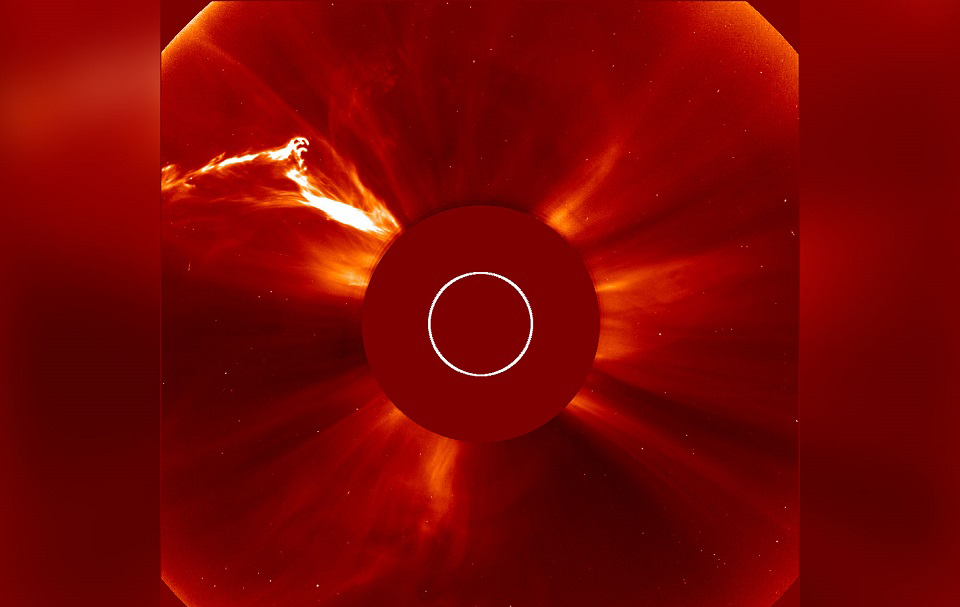Gary Boyle is an astronomy educator, guest speaker and monthly columnist for the Royal Astronomical Society of Canada (RASC), as well as past president of the Ottawa Centre of the RASC.
For the most part, this past Feb. 15 seemed like any ordinary day. We recognized Flag Day as the Canadian maple leaf that was first raised in Ottawa in 1965.
But things played out differently on the surface of the sun with a huge explosion known as a Coronal Mass Ejection (CME) into space.
The good news for us, this intense X-class occurred on the far side of the sun with the particles moving away from us. This class flare is the most powerful on the scale.
The sun is a huge ball of hot plasma, spanning the width of 109 earths lined up side by side like a string of pearls at its equator. The immense energy is produced at the sun’s core. Every second 600 million tons of hydrogen is converted into 595 million tons of helium. The remaining five million tons results in pure energy that helps sustain life here on earth. This has been going on for the last 4.6 billion years and will continue for another 4 to 5 billion more.
Over the sun’s eleven-year solar cycle, internal magnetic field lines begin to twist, building up energy.
Eventually, this energy is released in solar flares, forming large loops that are anchored to the solar disk. However, there are times when the flare’s energy is so intense, a CME explodes off the surface, travelling through the solar system via the solar wind. On a calm day, the solar winds blow at about 350 kilometres per second but a very intense explosion can race up to 2,000 kilometres per second.
When a cloud encounters the earth, it can set off spectacular Northern Light aka the Aurora Borealis. On a typical day, about 20 flares are seen on the surface of the sun.
When our atmosphere interacts with a solar storm, it helps balloon our atmosphere and is extremely dangerous for satellites. They can malfunction or be dragged down and destroyed as they burn up in the atmosphere. This occurred with a geomagnetic storm that hit the earth on at the end of January, bringing down 40 of the 49 Starlink satellites SpaceX had just sent up. This new batch had not reached its operating altitude and fell out of the sky costing about $20 million.
Another hazardous factor is if the CME had been angled toward earth, our planet could have been in serious trouble. Solar storms such as these can destroy power grids such as the Quebec blackout of March 13, 1989, when transformers melted. One of the most intense storms to hit the earth was called the Carrington Event of September 1-2, 1859. Teletype machines were still able to transmit messages even with the batteries disconnected. There were even reports of the paper and machines catching fire. The aurora was so bright, prospectors searching for gold, woke up in the middle of the night. They started making breakfast thinking the sun was rising.
At some point in the future, we will eventually be hit by another such Carrington Event. When it does, power grids will be affected or fail, impacting our everyday lives.
We rely so much on electricity and the Internet for city and country infrastructure. We dodged a solar bullet on February 15. The present solar cycle is ramping up to the height of Solar Max, sometime in July 2025.
From now till then will be a greater chance of seeing the shimmering Northern Lights.
Clear skies.



